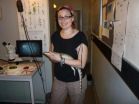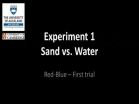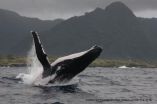(Press-News.org) March 26, 2014, Hong Kong, China –The international open-access journal GigaScience (a BGI and BioMed Central journal) today announces a major step forward for reproducible research and public data-sharing in the neurosciences with the publication and release of a huge cache of electrophysiology data resources. Important for studying visual development, many groups have been using multielectrode array recordings to look at developmental changes and the effects of various genetic defects on the spontaneous activity of the retina. In neuroscience, public sharing of data is not routine, and to date there are not many publically available electrophysiology datasets. In this new study, researchers from Cambridge, Newcastle, York and Imperial College in the UK made available 366 recordings from 12 electrophysiology studies collected between 1993 and 2014, spending several months to read the data from different formats and convert and annotate them in a standardized and interoperable manner. With growing concern over the inability to reproduce published research from bodies such as the US National Institutes of Health, this study also follows the still unusual step of encapsulating all of the data and software needed to write a paper in a format that can be easily shared. Following the reproducible research (RR) paradigm, this allows readers to see and use the code that generated each figure and table and know exactly how the results were calculated, adding confidence in the research output and allowing others to easily build upon previous work.
First author Dr Stephen Eglen from the University of Cambridge, UK, explains how this kind of work can encourage practices that enhance openness and reproducibility: "One way of encouraging neuroscientists to share their data is to provide some form of academic credit. Data papers in journals such as GigaScience are therefore one way forward". Reviewing the study in an equally transparent and reproducible fashion, one of the referees of the study, Dr Thomas Wachtler from the Ludwig-Maximilians-Universität München in Germany concurs, saying "The paper by Eglen and colleagues is a shining example for such openness in that it enables replicating the results almost as easily as by pressing a button."
Making the often-arduous peer-review process more straightforward, the referees were quickly able to exactly reproduce the results in the paper, and then even modify and adapt the figures in the paper. Another of the referees, Dr Christophe Pouzat from L'Université Paris Descartes, France, explained: "In addition to making the presented research trustworthy, the reproducible research paradigm definitely makes the reviewer's job much more fun!"
The authors hope the data will serve both as an example for developing future standards, as well as being used to address new scientific questions. All of the 1GB of supporting data and code is available from the GigaScience database, as well as the CARMEN virtual laboratory.
INFORMATION:
References:
1. Eglen, SJ; Weeks, M; Jessop, M; Simonotto, J; Jackson, T; Sernagor, E. A data repository and analysis framework for spontaneous neural activity recordings in developing retina. GigaScience 2014, 3:3 http://dx.doi.org/10.1186/2047-217X-3-3
2. Pre-publication pre-print version: http://biorxiv.org/content/early/2014/02/18/000455
3. Eglen, SJ; Weeks, M; Jessop, M; Simonotto, J; Jackson, T; Sernagor, E. (2014): Supporting material for "A data repository and analysis framework for spontaneous neural activity recordings in developing retina". GigaScience Database. http://dx.doi.org/10.5524/100089
GigaScience is co-published by BGI, the world's largest genomics organization, and BioMed Central, the world's first open-access publisher. The journal covers research that uses or produces 'big data' from the full spectrum of the life sciences. It also serves as a forum for discussing the difficulties of and unique needs for handling large-scale data from all areas of the life sciences. The journal has a completely novel publication format — one that integrates manuscript publication with complete data hosting, and analyses tool incorporation. To encourage transparent reporting of scientific research as well as enable future access and analyses, it is a requirement of manuscript submission to GigaScience that all supporting data and source code be made available in the GigaScience database, GigaDB, as well as in their publicly available repositories. GigaScience can provide users access to associated online tools and workflows, and includes an integrated data analysis platform, GigaGalaxy, maximizing the potential utility and re-use of data. (Follow us on twitter @GigaScience; Facebook, and keep up-to-date on our blogs.
Media Contacts
Scott Edmunds
Executive Editor, GigaScience, BGI Hong Kong
Tel: +852 3610 3531
Mob: +852 92490853
Email: scott@GigaSciencejournal.com
To directly receive future press releases from GigaScience send your name and media outlet to editorial@GigaSciencejournal.com under the subject header: Request To Receive Press Releases.
Reproducible research, dynamic documents, and push-button publishing
Researchers release a treasure trove of data on the developing retina, pushing the boundaries of neuroscience publishing by presenting it in an unprecedentedly dynamic and reproducible manner
2014-03-27
ELSE PRESS RELEASES FROM THIS DATE:
Economic growth has little impact on reducing undernutrition in children
2014-03-27
A large study of child growth patterns in 36 developing countries published in The Lancet Global Health journal has found that, contrary to widely held beliefs, economic growth is at best associated with very small, and in some cases no declines in levels of stunting, underweight, and wasting. This suggests that investment in interventions that directly impact health and nutrition are needed to tackle child undernutrition.
Worldwide, malnutrition contributes to 2.6 million child deaths each year, or more than one in three of all child deaths. In 2011, an estimated 165 ...
Economic growth no cure for child undernutrition
2014-03-27
Boston, MA —A large study of child growth patterns in 36 developing countries finds that, contrary to widely held beliefs, economic growth has little to no effect on the nutritional status of the world's poorest children. The study, from researchers at Harvard School of Public Health (HSPH), the University of Göttingen, Germany, ETH Zürich, Switzerland, and the Indian Institute of Technology Gandhinagar, found that economic growth was associated with small or no declines in stunting, underweight, and wasting—all signs of undernutrition.
"These findings represent a potentially ...
Canal between ears helps alligators pinpoint sound
2014-03-27
By reptile standards, alligators are positively chatty. They are the most vocal of the non-avian reptiles and are known to be able to pinpoint the source of sounds with accuracy. But it wasn't clear exactly how they did it because they lack external auditory structures.
In a new study, an international team of biologists shows that the alligator's ear is strongly directional because of large, air-filled channels connecting the two middle ears. This configuration is similar in birds, which have an interaural canal that increases directionality.
"Mammals usually have ...
Cuvier's beaked whales set new breath-hold diving records
2014-03-26
Scientists monitored Cuvier's beaked whales' record-breaking dives to depths of nearly two miles below the ocean surface and some dives lasted for over two hours, according to results published March 26, 2014, in the open access journal PLOS ONE by Gregory Schorr from Cascadia Research Collective and colleagues.
Distributed throughout the world's oceans, the Cuvier's beaked whales' frequent dives deep into the ocean make them difficult for researchers to study. Previous studies using short-term tags (~ 215 hours of data) have indicated that this deep-diving species might ...
Crows complete basic 'Aesop's fable' task
2014-03-26
VIDEO:
This video shows example trials for each of the six experiments.
Click here for more information.
New Caledonian crows may understand how to displace water to receive a reward, with the causal understanding level of a 5-7 year-old child, according to results published March 26, 2014, in the open access journal PLOS ONE by Sarah Jelbert from University of Auckland and colleagues.
Understanding causal relationships between actions is a key feature of human cognition. However, ...
Humpback whale populations share core skin bacterial community
2014-03-26
Humpback whales share a simplistic skin bacterial community across populations, according to results published March 26, 2014, in the open access journal PLOS ONE by Amy Apprill from the Woods Hole Oceanographic Institution and colleagues. The overall bacterial communities differ by geographic area and by metabolic state, such as feeding versus starving during migration and breeding.
Bacterial communities living on mammal skin may play a role in their health; for humans, there is a relationship between skin bacteria and allergic or inflammatory conditions. While skin ...
New drug successfully treats crizotinib-resistant, ALK-positive lung cancer
2014-03-26
Although the targeted cancer treatment drug crizotinib is very effective in causing rapid regression of a particular form of lung cancer, patients' tumors inevitably become resistant to the drug. Now a new drug called ceritinib appears to be effective against advanced ALK-positive non-small cell lung cancer (NSCLC), both in tumors that have become resistant to crizotinib and in those never treated with the older drug. The results of a phase 1 clinical trial conducted at centers in 11 countries are reported in the March 27 New England Journal of Medicine.
"Crizotinib ...
Patches of cortical layers disrupted during early brain development in autism
2014-03-26
Researchers at the University of California, San Diego School of Medicine and the Allen Institute for Brain Science have published a study that gives clear and direct new evidence that autism begins during pregnancy.
The study will be published in the March 27 online edition of the New England Journal of Medicine.
The researchers – Eric Courchesne, PhD, professor of neurosciences and director of the Autism Center of Excellence at UC San Diego, Ed S. Lein, PhD, of the Allen Institute for Brain Science in Seattle, and first author Rich Stoner, PhD, of the UC San Diego ...
Bamboo-loving giant pandas also have a sweet tooth
2014-03-26
PHILADELPHIA (March 26, 2014) – Despite the popular conception of giant pandas as continually chomping on bamboo to fulfill a voracious appetite for this reedy grass, new research from the Monell Center reveals that this highly endangered species also has a sweet tooth. A combination of behavioral and molecular genetic studies demonstrated that the giant panda both possesses functional sweet taste receptors and also shows a strong preference for some natural sweeteners, including fructose and sucrose.
"Examining an animal's taste DNA can give us clues to their past diet, ...
Researchers identify protein that helps control common viral infection
2014-03-26
Infectious disease specialists at the Johns Hopkins Children's Center have identified a protein that regulates the body's immune response to cytomegalovirus (CMV), a common pathogen that causes lifelong infections and can lead to devastating illness in newborns and those with weakened immune systems.
The protein — a cell receptor called NOD2 found in several types of immune cells — has long been known for its role in fighting off bacterial invaders by sensing their presence and alerting immune cells to release chemicals that weaken or destroy the harmful bacteria. That ...
LAST 30 PRESS RELEASES:
Decoupling the HOR enhancement on PtRu: Dynamically matching interfacial water to reaction coordinates
Sulfur isn’t poisonous when it synergistically acts with phosphine in olefins hydroformylation
URI researchers uncover molecular mechanisms behind speciation in corals
Chitin based carbon aerogel offers a cleaner way to store thermal energy
Tracing hidden sources of nitrate pollution in rapidly changing rural urban landscapes
Viruses on plastic pollution may quietly accelerate the spread of antibiotic resistance
Three UH Rainbow Babies & Children’s faculty elected to prestigious American Pediatric Society
Tunnel resilience models unveiled to aid post-earthquake recovery
Satellite communication systems: the future of 5G/6G connectivity
Space computing power networks: a new frontier for satellite technologies
Experiments advance potential of protein that makes hydrogen sulfide as a therapeutic target for Alzheimer’s disease
Examining private equity’s role in fertility care
Current Molecular Pharmacology achieves a landmark: real-time CiteScore advances to 7.2
Skeletal muscle epigenetic clocks developed using postmortem tissue from an Asian population
Estimating unemployment rates with social media data
Climate policies can backfire by eroding “green” values, study finds
Too much screen time too soon? A*STAR study links infant screen exposure to brain changes and teen anxiety
Global psychiatry mourns Professor Dan Stein, visionary who transformed mental health science across Africa and beyond
KIST develops eco-friendly palladium recovery technology to safeguard resource security
Statins significantly reduce mortality risk for adults with diabetes, regardless of cardiovascular risk
Brain immune cells may drive more damage in females than males with Alzheimer’s
Evidence-based recommendations empower clinicians to manage epilepsy in pregnancy
Fungus turns bark beetles’ defenses against them
There are new antivirals being tested for herpesviruses. Scientists now know how they work
CDI scientist, colleagues author review of global burden of fungus Candida auris
How does stroke influence speech comprehension?
B cells transiently unlock their plasticity, risking lymphoma development
Advanced AI dodel predicts spoken language outcomes in deaf children after cochlear implants
Multimodal imaging-based cerebral blood flow prediction model development in simulated microgravity
Accelerated streaming subgraph matching framework is faster, more robust, and scalable
[Press-News.org] Reproducible research, dynamic documents, and push-button publishingResearchers release a treasure trove of data on the developing retina, pushing the boundaries of neuroscience publishing by presenting it in an unprecedentedly dynamic and reproducible manner



